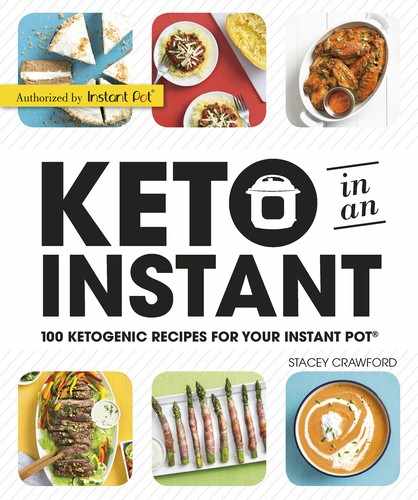THE KETOGENIC KITCHEN
Knowing what you can eat—and what to avoid—is an important step in getting started with a keto diet. The following guide will help you understand which foods are keto-friendly and which should be avoided.
GOOD
VEGETABLESalfalfa sprouts, artichokes, arugula, asparagus, avocado, bell pepper, bok choy, broccoli, Brussels sprouts, cabbage, cauliflower, celery, chili peppers, collard greens, cucumber, eggplant, endive, garlic, green beans, green onion, iceberg lettuce, jalapeño, jicama, kale, mushrooms, mustard greens, okra, olives, pumpkin, radishes, spinach, squash, Swiss chard, tomatoes, tomatillos, turnips, watercress, zucchini |
FRUITSblackberries, blueberries, coconut (unsweetened), lemon, lime, raspberries, strawberries FATS AND OILSavocado oil, bacon grease, butter, coconut oil, ghee, lard, nut and seed oils, olive oil, palm shortening, sesame oil MEAT AND EGGSbeef, eggs, fish, pork, poultry, seafood and shellfish |
DAIRYfull-fat butter, full-fat cheeses (hard, soft, semisoft cream cheeses, ricotta, and mascarpone), full-fat sour cream, heavy cream (whipping cream) DAIRY-FREE ALTERNATIVESalmond cheese, unsweetened almond milk, unsweetened full-fat coconut cream, unsweetened full-fat coconut milk |
IN MODERATION
VEGETABLEScarrots, celeriac root, onions, rutabagas |
FRUITScantaloupe, cherries, clementines, kiwi, peaches, plums, watermelon MEAT AND EGGSuncured or minimally processed meats that have no sugar added and are gluten and nitrate-free, including bacon, ham, sausage, pepperoni, salami, hot dogs, and some deli meats |
DAIRY AND DAIRY-FREE ALTERNATIVESfull-fat cottage cheese, full-fat unsweetened plain Greek yogurt |
AVOID
VEGETABLESbeets, corn, parsnips, peas, potatoes, sweet potatoes, yams |
FRUITSapples, bananas, dates (and most other dried fruits), grapes, mangoes, oranges, pears, pineapple FATS AND OILSfully hydrogenated oils (peanut, corn, cottonseed), grapeseed oil, partially hydrogenated oils (palm, vegetable, canola, soybean), margarine, processed vegetable oils MEAT AND EGGSProcessed meats that contain additives such as sugar, corn syrup, maple syrup, wheat flour, rice flour, or other starches |
DAIRY AND DAIRY-FREE ALTERNATIVESdairy milks (nonfat, low-fat, and whole varieties as they contain sugars), nonfat or low-fat dairy products that contain added sugars, sweetened coconut milk, sweetened nut milks (including almond and cashew), sweetened yogurts, yogurts containing high-carb fruits (such as apples or bananas), sugar-sweetened dairy desserts (including ice cream, frozen yogurt, and milkshakes) |
SWEETENERS
GOOD
|
Erythritol and oligosaccharide blends (such as Swerve)—This is a sugar alcohol and fiber blend that comes in granular and confectioners’ styles. It’s calorie-free, low glycemic, has non-impact carbs (which means the carbs in it are not metabolized), and it does not raise blood sugar levels. It tastes similar to sugar and measures the same as sugar. It can also brown or caramelize like sugar, which makes it an ideal sweetener blend for baking. Erythritol and stevia blends (such as Truvia)—A sugar alcohol and stevia blend that is low carb. This sweetener blend also works well for baking, but it is sweeter than sugar. If using this blend, you may need to check the packaging for conversion ratios when using this option to replace other sweeteners. |
Stevia and inulin blends (such as Sweet Leaf)—A granular, low carb stevia and fiber combination sweetener. Good for coffee, tea, whipped cream, or yogurt, but not the best for baking. Stevia—A low-carb sweetener that is available in granular and liquid forms. Works well in liquids or cold foods, but not well for baking. Stevia is a concentrated herb that can have a strong aftertaste. It’s usually better tasting when blended with sugar alcohol. Monk fruit—A more difficult-to-find low-carb sweetener that can be low carb, depending on the brand and what other ingredients are in it. Xylitol—A sugar alcohol low-carb sweetener option. (Note that it is very toxic to dogs and also has been known to cause gastric issues for some people.) |
AVOID
|
agave syrup, coconut sugar, date sugar, fruit juices, high-fructose corn syrup, honey, maple syrup, sugar (white, brown, or raw) |
Any artificial sweeteners such as aspartame, saccharin, and sucralose (although low carb, the health risks outweigh the benefits) |
SPECIALTY INGREDIENTS
- Unsweetened almond milk and coconut milk—These unsweetened nut milks are lower in carbs than traditional dairy milk.
- Coconut cream—A solid cream made from coconut milk and a dairy-free alternative to whipped heavy cream
- Coconut flour—A low-carb, high-fiber, high-fat, and gluten-free flour made from dried and ground coconut meat. Used in low-carb baking.
- Almond flour—A low-carb, high-fat, gluten-free flour made from ground almonds. Used in low-carb baking.
- Golden flaxseed meal—A low-carb, high-fiber, gluten-free seed meal used in low-carb baking.
- Arrowroot powder—A starchy root powder that, when used in small amounts, is good for thickening sauces and soups. (Note that arrowroot powder is not low carb and should be used only in small quantities.)
- Xanthan gum—A natural emulsifier and thickener that is used to thicken sauces or creams, or to help bind gluten-free flours in baking.
Baking with low-carb sweeteners

When baking with low-carb sweeteners, always try to use the exact sweetener called for in the recipe. Changing the sweetener may yield disappointing results and the finished product may not brown properly. If you do need to use a sweetener or sweetener blend that is different than what is called for in the recipe, refer to the brand’s conversion charts to make any necessary adjustments to the measurements.
